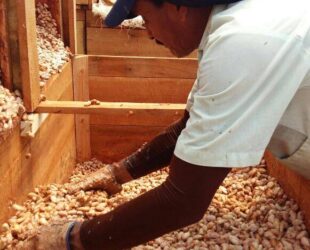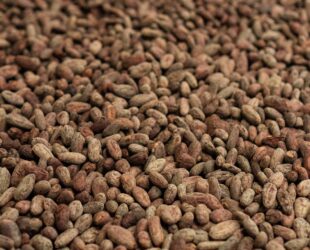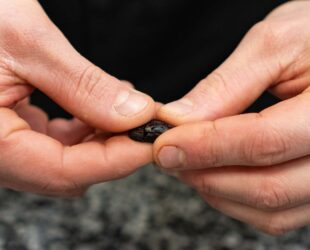Cacao and the Rise of
FUNCTIONAL FOODS
— A Paradox Turned Opportunity
CACAO AND THE RISE OF
FUNCTIONAL FOODS
— A Paradox Turned Opportunity
CONTENTS


INTRODUCTION
What if the real innovation in food today wasn’t about adding more — but about rediscovering what’s already there?
The rapid rise of functional foods — products promising energy, beauty, focus, immunity, or calm — reveals more than a fleeting wellness trend. It marks a deeper shift in how consumers relate to nourishment: food is no longer just about pleasure or survival, but about measurable benefits and daily performance.
Cacao, unsurprisingly, hasn’t escaped this transformation. Fancy bite-sized snacks, fortified bars or enhanced cocoa powders — Highly processed byproducts are being reimagined as carriers for adaptogens, collagen, or “superfoods.”
Yet this very moment holds a paradox: cacao has always been functional in its purest form.
Its biochemical complexity and cultural heritage have long embodied the balance between flavor, physiology, and meaning that the modern food industry is now striving to recreate.



The Functional Food Consumer
Consumers of functional foods represent a diverse yet growing demographic. They include health-conscious adults, the elderly, young urban professionals, athletes, and those managing specific dietary needs.
→ Middle-aged and older consumers tend to buy functional foods for disease prevention, mobility support, and long-term well-being.
→ Younger adults (ages 18–34) are more driven by convenience, openness to innovation, and the desire to integrate health into fast-paced lives.
→ Research shows that women are more likely than men to accept functional foods, particularly when perceived health benefits outweigh taste compromises.
→ Active-lifestyle consumers — from fitness enthusiasts to digital professionals — seek hydration, focus, and energy support in their snacks.
→ And those with dietary restrictions (plant-based, sugar-free, non-GMO) naturally gravitate toward “clean label” products that promise safety, transparency, and self-control.¹
Motivations for Purchase:
- Health Motivation: Preventing illness, managing chronic conditions, or improving digestive and immune function.
- Convenience: Accessing perceived health benefits without major changes to diet or routine.
- Perceived Value: Belief in unique, measurable advantages — from stress reduction to anti-aging — justifies a premium price.
- Lifestyle Alignment: Products fitting seamlessly into busy or performance-oriented lives.
- Social Perception: Buying health-enhancing foods can be a form of status signaling — a way to show one’s intelligence and moral investment in well-being.[²]
In short, people pay more for functional foods not just because of what they do, but what they represent: control, awareness, and modern self-care.
The Paradox: Cacao Has Always Been Functional
Walk into any wellness store or scroll through Instagram and you’ll find endless variations of cacao rebranded as functional:
- Chocolates fortified with mushrooms (Lion’s Mane, Cordyceps, Reishi) for mood or focus;
- High-flavanol cocoa powders for heart and metabolic health;
- Chocolate with probiotics for gut balance;
- Bars enhanced with ashwagandha or maca for stress and stamina;
- Low-glycemic chocolate marketed for diabetic support;
- Cacao mixes “fortified” with minerals like magnesium and iron for stress relief.
But here’s the irony: every single one of those claimed benefits already exists within cacao itself.
The catch? It must be consumed in its purest, least processed form — high-grade, single-origin cacao paste — and produced through artisanal, minimalistic methods that preserve its natural bioactive compounds (monitored fermentation, light roasting, slow grinding etc…)
In other words, consuming Origin Cacao or cacao in the traditional way — as practiced for millenia by Mesoamerican and northern South American cultures — achieves these benefits combined, naturally.
Too good to be true?
Not quite. In Health Benefits & Effects, we outlined cacao’s numerous health benefits, supported by a wide body of research — from its influence on cardiovascular and cognitive health to its positive effects on mood and metabolism.³

The Science: Where Flavor Meets Function
Modern science has begun to uncover what traditional cacao cultures already knew intuitively.
As an example, summarized by Melo et al. (2021)⁴ :
“Phenolics constitute a prominent group of bioactive compounds found in cacao, including flavonoids, catechins, and procyanidins. These phenolic compounds imbue cacao with its distinctive taste and aroma while also playing a pivotal role in its antioxidant properties. The antioxidant capacity of cacao phenolics helps neutralize harmful free radicals in the body, thereby mitigating oxidative stress and potentially reducing the risk of various chronic diseases… Furthermore, these phenolic compounds have been associated with anti-inflammatory properties.”
This overlap between aromatic molecules and bioactive function is fascinating.
Some of cacao’s compounds like theobromine, phenylethylamine and flavanols not only shape its sensory complexity — bitterness, floral or earthy notes — but also contribute to its physiological effects: improved circulation, cognitive enhancement, and reduced inflammation.
From this perspective, the distinction between “specialty cacao” and “functional cacao” collapses. Both dimensions arise from the same molecules — from the way cacao was cultivated, fermented, dried, and processed, but also from its genetics and terroir.
Redefining Quality in Cacao
If you’re reading this from within the specialty cacao industry, you probably feel the same tension:
How can we stay relevant while the market shifts toward health-conscious, functional consumption modes?
The answer lies in broadening the definition of quality.
Cacao’s value can no longer be defined solely by its potential flavor.
From now on, it will also include:
- Nutritional value (bioactive compound preservation)
- Cultural depth (reconnecting with cacao’s traditional uses)
- Ecological ethics (farming practices that honor the plant and its people)
This evolution doesn’t threaten fine cacao; it enhances it.
By acknowledging cacao’s cultural roots & traditions, which have been overshadowed for centuries, and emphasizing outstanding cultivation conditions, we create room for new forms of value accessible to farmers and other people at the source.
When we highlight cacao’s bioactive profile and its ethical cultivation, we’re not diluting its identity — we’re reconnecting it to what it always was: a plant of power, meaning, and well-being.

A Call to Reconnection
Functional foods might have seemed like a marketing fad — but they’ve forced us to revisit something deeper: the ancient link between food and health.
For too long, industrialization separated the two, turning food into fuel and health into treatment.
Now, as consumers rediscover holistic nourishment, cacao can lead this reconnection.
Not by mimicking trends, but by reclaiming its rightful place as a plant that feeds both body and spirit — in a way modern science is only beginning to quantify.
It’s time for the cacao industry to see this not as disruption, but as a call to evolve — to create a new narrative that values flavor, ethics, and function as one.

SOURCES
REFERENCES
- Granato, Daniel, et al. “Trends in the Use of Functional Foods: A Comprehensive Review of the Most Popular Ingredients and Health Claims.” Food Research International 140 (2021): 109904. https://pubmed.ncbi.nlm.nih.gov/34067768/
- Martirosyan, D. M., and J. K. Singh. “A New Definition of Functional Food by FFC: What Makes a New Definition Unique?” Functional Foods in Health and Disease 11, no. 11 (2021): 519–539. https://pmc.ncbi.nlm.nih.gov/articles/PMC8835010/
- Cacao Insights. “Health Benefits and Effects of Cacao.” Cacao Insights, 2025. https://cacaoinsights.com/learn/insights/health-benefits-and-effects/
- Melo, P. S., et al. “Review on the Biological and Bioactive Components of Cocoa (Theobroma cacao): Insight.” Nutrition Research for Food, Health and Happiness (2021). https://www.nrfhh.com/Review-on-the-Biological-and-Bioactive-components-of-Cocoa-Theobroma-Cacao-Insight,174302,0,2.html
BACKGROUND MATERIAL
• Patchett, Marcos. The Secret Life of Chocolate. London: Aeon Books, 2020. ISBN 978‑1‑911597‑06‑3.








